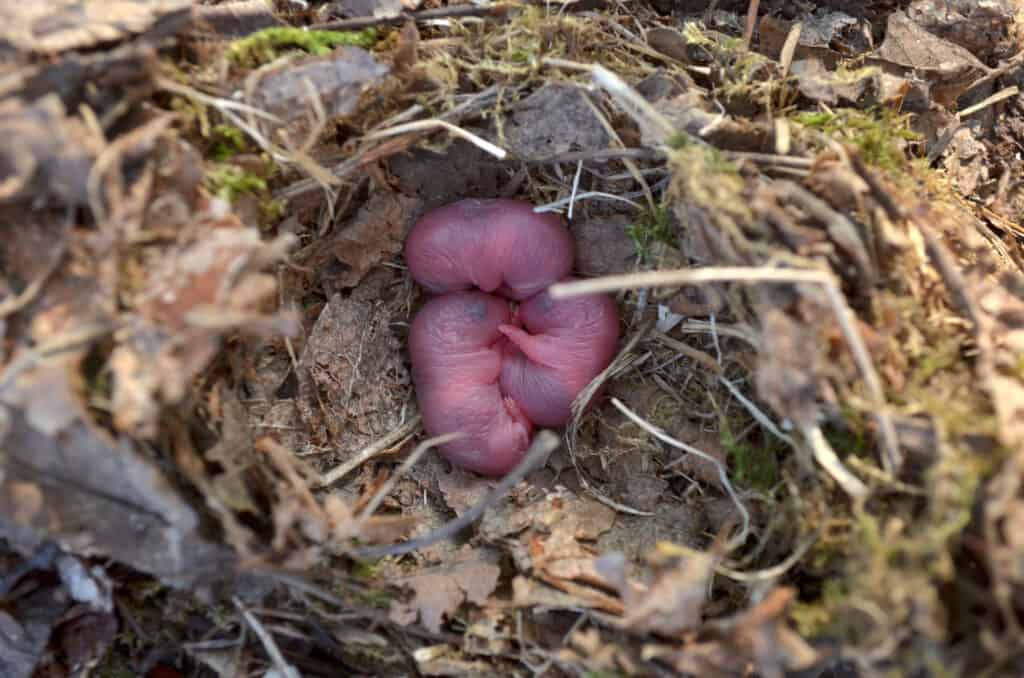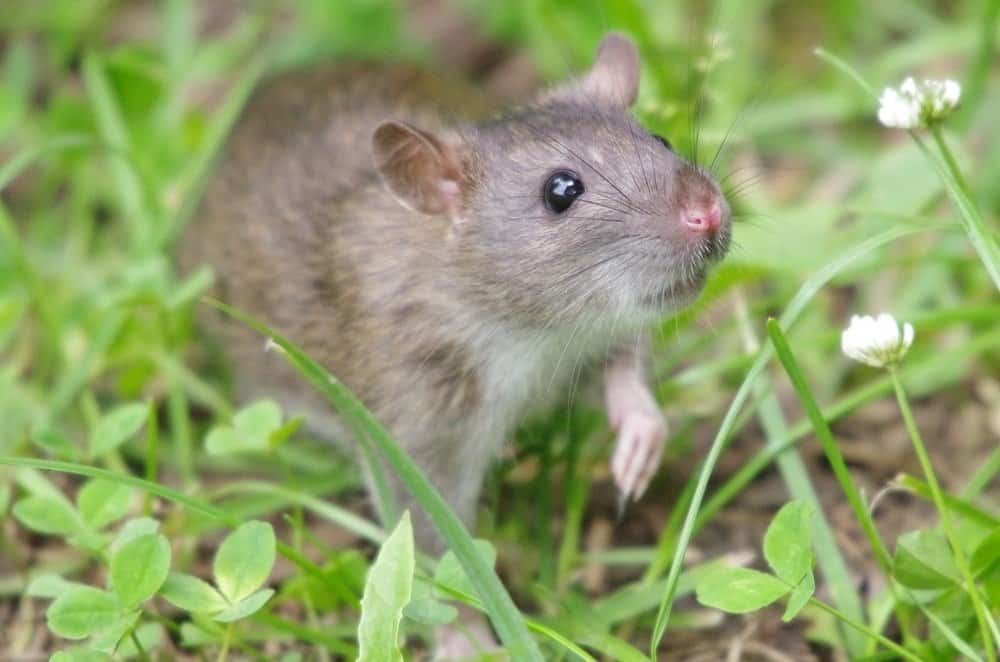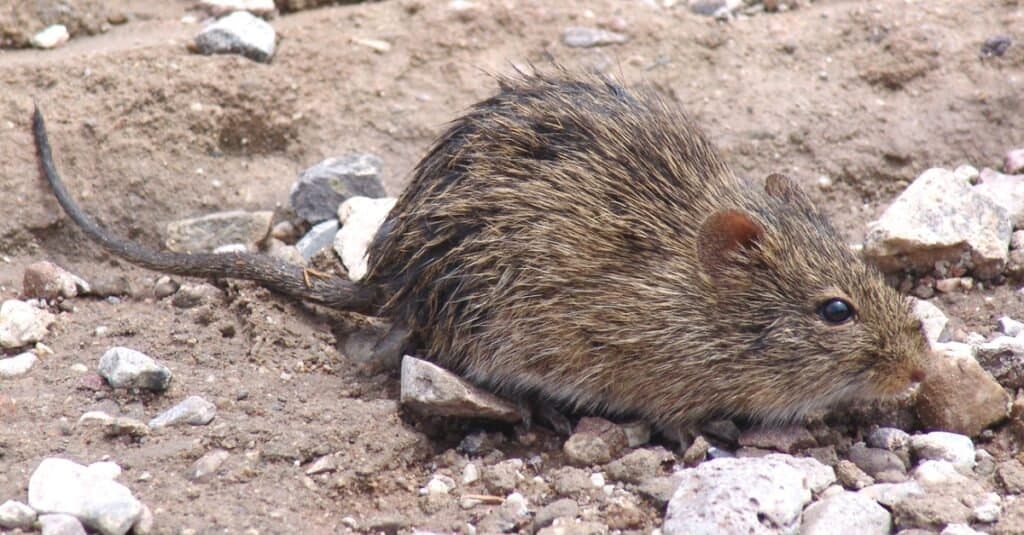Although many people love having rats and rodents as pets, these animals pose a hazard when nesting near your home. Rats can damage the structure of your house and even transmit diseases to you and your pets. And there are currently seven billion rats on the planet, meaning you stand a good chance of coming across a rat or rats in or near your home. To prevent these animals from damaging your house and transmitting diseases, we explain how to recognize a rat nest and what to do next.
Identifying a Rat Nest

Rat droppings, burrows, noises, damage, and marks are all signs of how to recognize a rat nest.
©iStock.com/Julia Bilousova
You will frequently find rat nests in urban and suburban areas as these animals look for easy food, water, and shelter sources. But, you won’t easily spot rat nests in plain sight, so you need to understand what signs will give them away. Standard identifiers of a rat nest in the area are the following:
- Rat droppings: Rats, on average, produce 40 droppings daily. So, you should see dark droppings the size of a rice grain near rat nests.
- Burrows: Certain rats are known to dig and create burrows where they form nests or store food. You will often see these holes near the garage, garden sheds, and under porches.
- Tracks: If rats build their nests in sandy or dusty spots, they will leave tracks and footprints around the site. Besides spotting these tracks during the day, you can see them with a strong flashlight at night.
- Noises. Rats are good climbers and often build nests in roof spaces. If they do, you will hear noises, scratches, and scurrying sounds in the roof space. So naturally, you should also be able to hear these noises if they build nests under the flooring or between the walls.
- Damage. As rats build nests, they create space by gnawing on wood, plastic, and other softer materials. Therefore, if you notice damage to an area with small teeth marks, a rat nest is likely nearby.
- Marks. As rats have poor vision, they typically bump into surfaces or follow wall areas with their bodies. When they do, the dirt and dust on their bodies transfer to these surfaces, creating rub and smear marks.
Rats build their nests with plants, garbage, man-made materials, cotton, sticks, and twigs. The size of their nest varies depending on the number of rats in the nest. However, the average size of a rat’s nest is the size of a cereal bowl. Rat nests are common in homes, garbage dumps, near water sources, and discarded furniture. If a rat builds its nest in your house, it will likely be under the porch, in the attic, near plumbing, between the walls, or crawlspace.
What To Do When You Find a Rat Nest

Professional pest control can be contacted to help with removing a rat nest.
©Marina_Saw_it/Shutterstock.com
A rat nest near your home is a hazard, even if you are a rodent lover. Rats are known to be invasive and destructive and will damage your property if they have the opportunity. But more importantly, they are known to cause house fires as they gnaw and chew through electric cables.
Rats also carry diseases like Salmonella, rat bite fever, leptospirosis, and murine typhus. People and animals can be infected by these diseases if they come into contact with rats or if their food becomes contaminated by rats. But once you learn how to recognize a rat nest, you can take action.
Professional pest control
The first thing to do when you find a rat’s nest is to contact a pest control team. A pest control team can remove the rat’s nest from your home within a few hours and take the inconvenience and risk off your hands.
DIY rat nest removal equipment
You can also remove the nest yourself. If you choose this route, you need safety tools such as gloves, goggles, and a respirator. You should use a respirator while removing the nest as it contains dust and particles. In addition, the rat’s dropping can potentially contain bio-hazardous disease-causing organisms that could spread disease.
Rat traps
You can use store-bought traps to remove the rats from your home. Some of these devices are humane, but some are purposefully made to kill the rats. The humane traps use bait to lure the rat into the trap before a trapdoor shuts and traps the rats inside the device.
You would then transfer the rats to a different location before letting them free. A more aggressive trap like the bait trap uses a CO2-powered shot. This shot instantly kills the rat and does not use toxins or electricity. You can then dispose of the rat by burying it in your garden rather than throwing it in the garbage. Ensure you use safety gloves and disinfect the gloves properly after use to avoid spreading possible diseases.
How To Prevent Rats From Entering Your Home

Rat-proofing your home and garden is a way to keep rats out.
©iStock.com/rtrible
Once you remove a rat nest, you can take measures to keep them from invading your space again. When rat-proofing your home, the most important thing to remember is to cut off the rat’s survival resources. Rats make nests in houses because they are drawn to dry, warm areas for a comfortable life.
They enter through holes or cracks around and in your home and through floor drains, open doors, windows, and fan openings. Consequently, you must ensure that you fill and seal all holes and cracks in and around your home. You must also do the same with floor drains, open doors, windows, and fan openings, providing great entry spots for rats.
Besides your house, you can also rat-proof your garden. Rats prefer living in overgrown spaces where they can burrow and hide. Therefore, you should clear your garden of dense plants, garbage, unnecessary structures, and wood. You could also plant vegetation like marigolds, garlic, rosemary, black pepper, onions, daffodils, and black pepper plants. Rats dislike these plants because of their strong scent, encouraging them to make their nests elsewhere.
The photo featured at the top of this post is © iStock.com/M. Leonard Photography
Thank you for reading! Have some feedback for us? Contact the AZ Animals editorial team.






